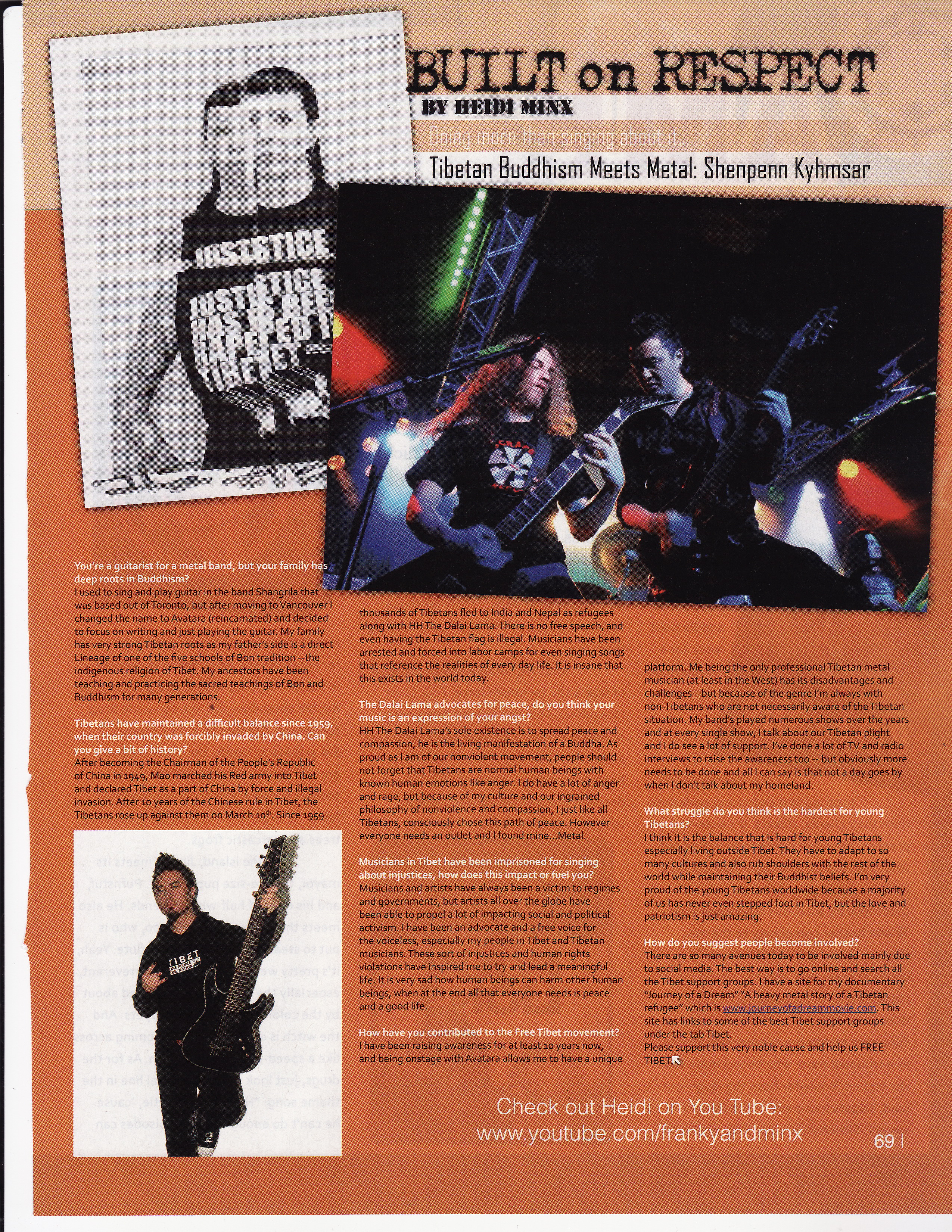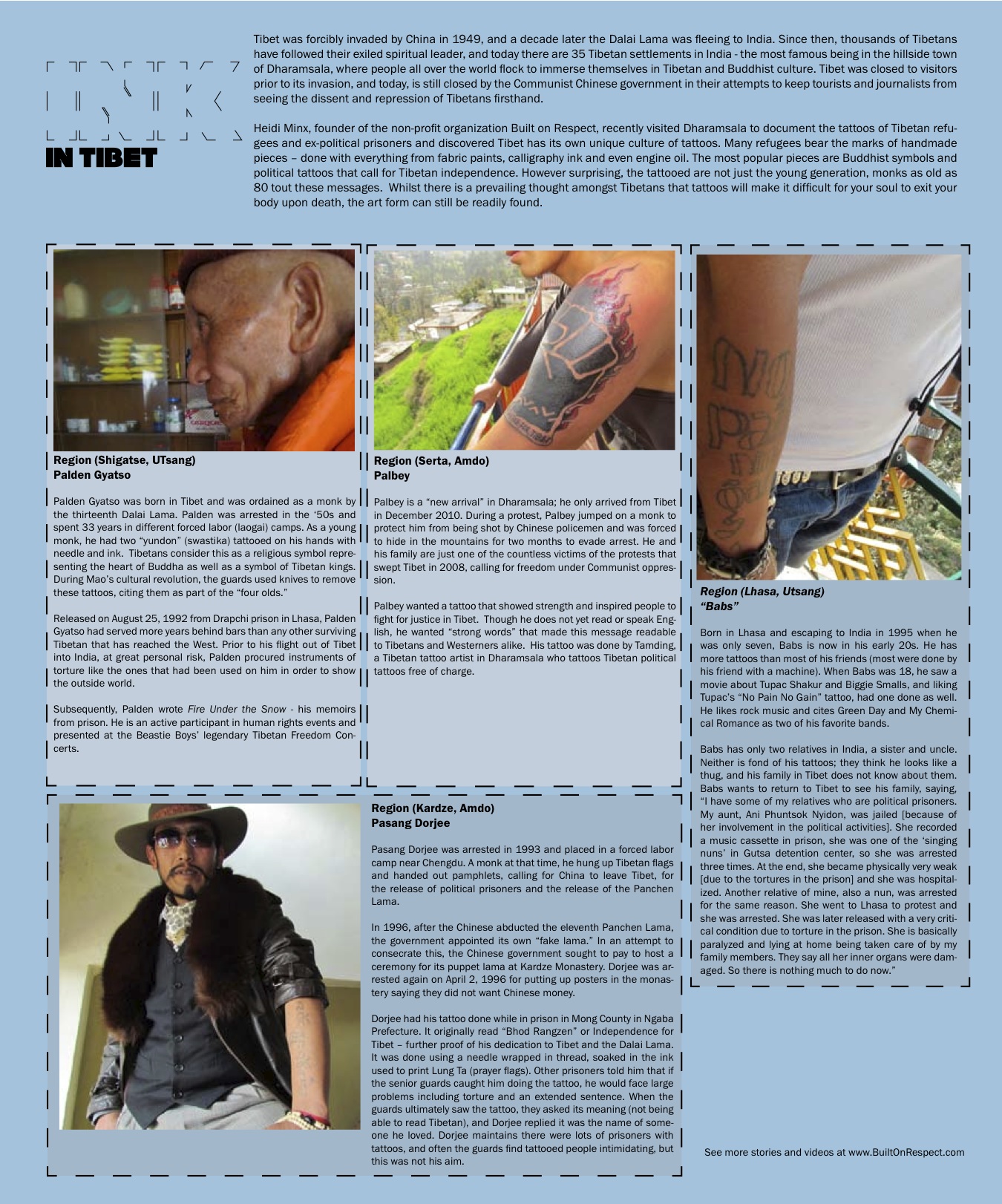Can ABC World News Get Answers?
Whilst Chinese Media is censored and there are restraints on foreign journalists, this is still a chance to bring Tibet’s issues to the forefront.
MINING:
From ICT’s report on 8/31/10:
“Chinese police shot dead a Tibetan “by accident” during a protest related to mining in a Tibetan area of Sichuan two weeks ago, according to a rare admission in a Chinese state media report yesterday. According to reports from Tibetans in the area at least three Tibetans may have been killed in the incident, in which police opened fire on a group of Tibetans protesting about environmental damage caused by mining in the eastern Tibetan area of Kham, although it has not been possible to confirm the exact number of fatalities. It is the most serious incident in recent months of armed response to a mining protest that Tibetan sources reported was peaceful.”
Ms. Sawyer, what reparations do Kartin Mining and the PRC’s Government plan to make to rectify these injustices?
ENVIRONMENT:
ICT reported that Lawyers for Karma Samdrup, a leading Tibetan environmentalist and philanthropist sentenced to 15 years imprisonment on June 24 on highly dubious charges of involvement in a 12-year old case of grave robbing, learned that his appeal was summarily rejected on July 7 – the same day the court had received the case file. The court had neglected to inform either his lawyers or Karma Samdrup’s wife of its decision.
Karma Samdrup is one of three brothers who are all now either imprisoned or serving “re-education through labor” following charges that are believed to have been rigged after their efforts to stop the poaching of endangered species clashed with the local authorities. The brothers had worked to plant trees, pick up litter and protect animals from illegal hunters are arrested, tortured and illegally sentenced without lawyers. Their families and supporters have been beaten and tortured.
Ms. Sawyer, why are protectors of the environment punished?
POLITICAL PRISONERS:
There are countless political prisoners in forced labor camps in Tibet, others have simply ‘disappeared’. Dhondup Wangchen is in prison for making a film, Leaving Fear Behind, which asked everyday Tibetans about life in Tibet, HH the Dalai Lama, and the Olympics.
He was tortured badly, is suffering from Hepatitis B, and is being denied medical attention.
Ms. Sawyer, why is medical attention being denied?
THE PANCHEN LAMA
Fifteen years ago, the son of a Tibetan herder, Gendun Choekyi Nyima was only five when he was selected by the exiled Dalai Lama as the reincarnation of the Panchen Lama. The PRC kidnapped the young boy and his family, and have refused to answer to his whereabouts.
In March, 2010, the Times Online reported Tibet’s new governor, Padma Choling, as saying, “The young man, now 20, is still living in Tibet, where “his brothers and sisters are at university or are doing regular work”.
Ms. Sawyer, where is he? The PRC cannot evade the UN’s queries.
CONCENTRATION CAMPS
From the Laogai Research Foundation, “The Laogai is more than a place to detain and “reform” convicts and dissidents; it is inextricably linked to the Chinese economy. The Chinese government profits handsomely from the labor camp system by allowing goods made with forced labor to enter both domestic and international markets. The Laogai relies on prisoners to provide free labor in over 1,000 camps. Most Laogai camps operate a commercial enterprise, be it a factory, farm, workshop, or mine. Indeed, many camps have a number of Laogai enterprises producing a wide range of products. Prisons in China generally have two names: a commercial name used for trading and an official administrative name identifying the facility as a prison. Because prisoners are not paid for their work, these Laogai enterprises are able to reap huge profits. Due to intentional deception on the part of Laogai enterprises, lax international labeling requirements for manufactured goods, and the fact that many Laogai products are traded via middlemen, it is extremely difficult to trace the origins of Laogai products once they have entered the market. Consequently, enforcement of bilateral trade agreements, such as the 1992 Memorandum of Understanding (MOU) between the U.S. and the PRC on prohibiting trade in prison labor products and a similar 1994 Statement of Cooperation (SOC), has proven difficult and ineffective.”
Ms. Sawyer, what percentage of Chinese made goods originated from these forced-labor camps have illegally entered the US market?
Please use this opportunity with the US media to question the issues of Tibet.
The form on ABC’s site allows for only 1500 words per comment, but you can copy and paste any of the issues addressed above into the form individually, or write your thoughts.
Tags: ABC Worls News, Tibet














